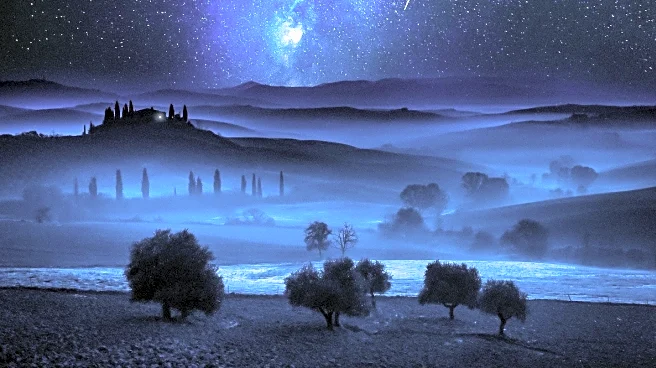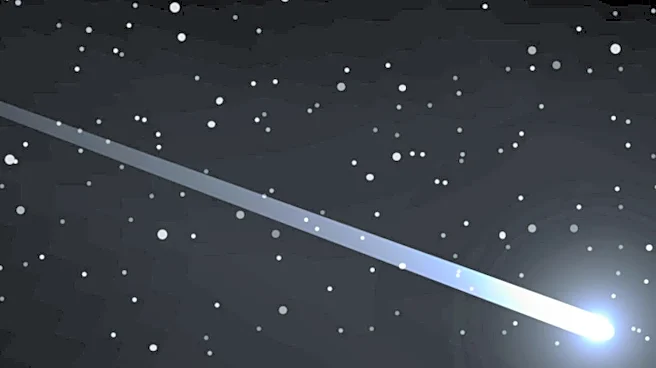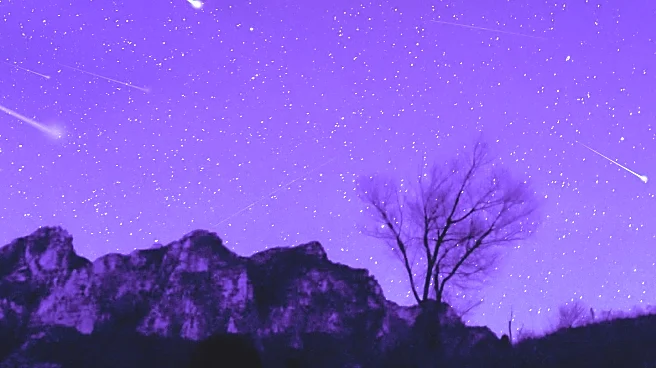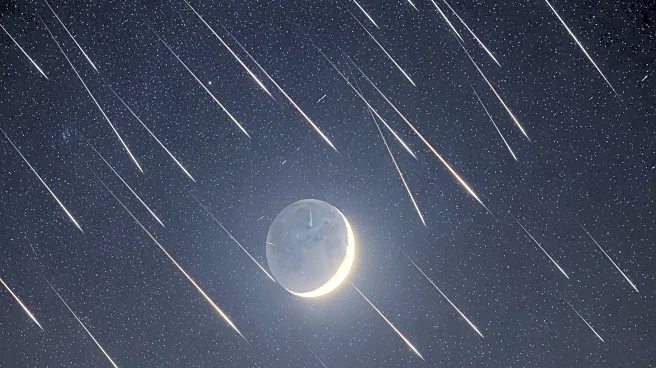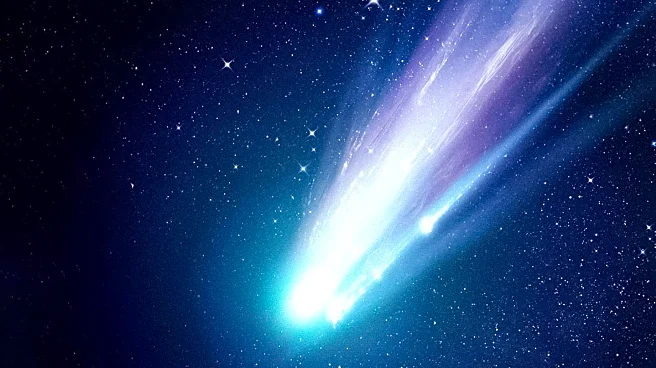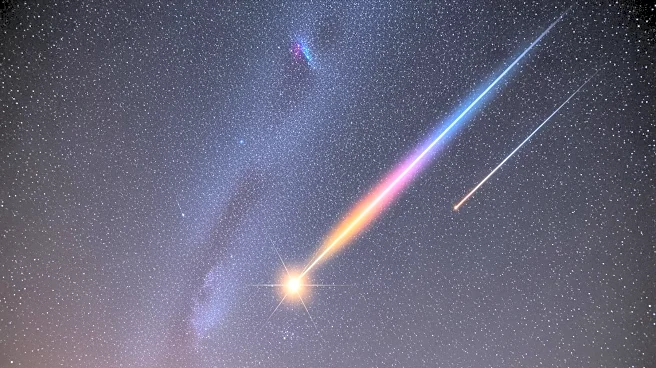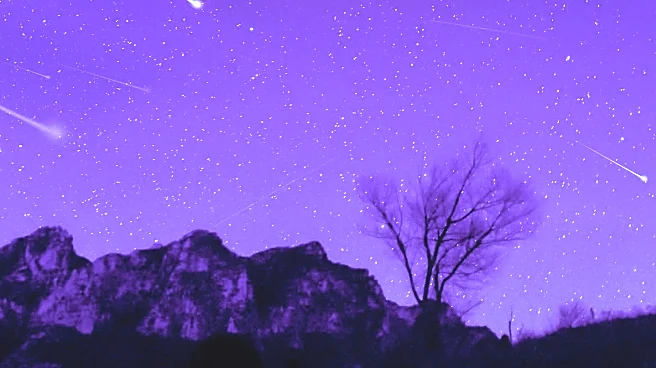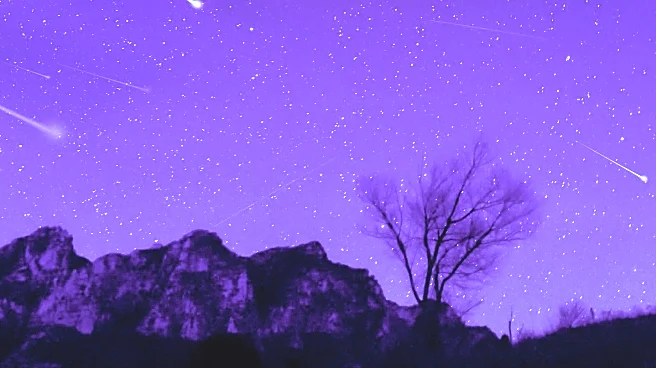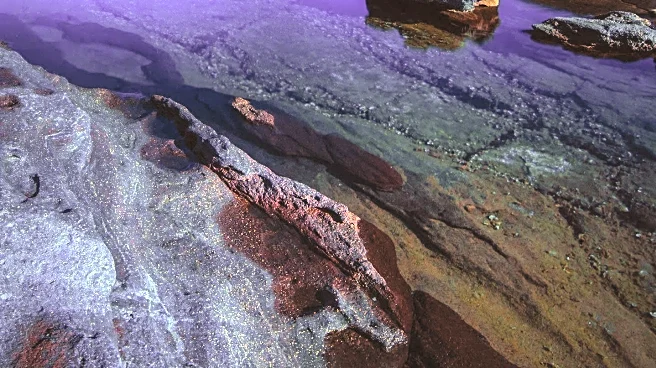What's Happening?
The Orionid meteor shower, considered one of the most stunning meteor displays of the year, is peaking overnight from October 20 to October 21, 2025. This event occurs as Earth passes through debris from Halley's
Comet, resulting in bright meteors traveling at speeds of 41 miles per second. The shower is expected to produce 10 to 20 meteors per hour, with the best viewing times being before midnight until around 2 a.m. Observers are advised to find areas away from city lights for optimal viewing. The shower coincides with a new moon, enhancing visibility and increasing the chances of seeing fireballs, which are prolonged explosions of light.
Why It's Important?
The Orionid meteor shower provides a unique opportunity for both amateur and professional astronomers to observe and study meteoric activity. The event is significant as it showcases the remnants of Halley's Comet, offering insights into its composition and trajectory. The shower's occurrence during a moonless night maximizes viewing conditions, making it an ideal time for educational outreach and public engagement in astronomy. This celestial event also highlights the beauty and complexity of space phenomena, fostering interest and appreciation for the natural world.
What's Next?
Following the peak of the Orionid meteor shower, other meteor showers such as the Southern Taurids and Northern Taurids are expected to occur in early November. These events continue to provide opportunities for observation and study of meteor activity. Additionally, the presence of supermoons in November and December will further enrich the celestial calendar, offering varied experiences for skywatchers. As the Orionids remain active until November 7, enthusiasts can continue to enjoy the spectacle over the coming weeks.
Beyond the Headlines
The Orionid meteor shower not only captivates observers but also serves as a reminder of the vastness and complexity of our solar system. The event underscores the importance of ongoing research and monitoring of celestial bodies, which can yield valuable data about the composition and behavior of comets and meteors. Furthermore, such events can inspire future generations to pursue careers in astronomy and space sciences, contributing to advancements in technology and exploration.
